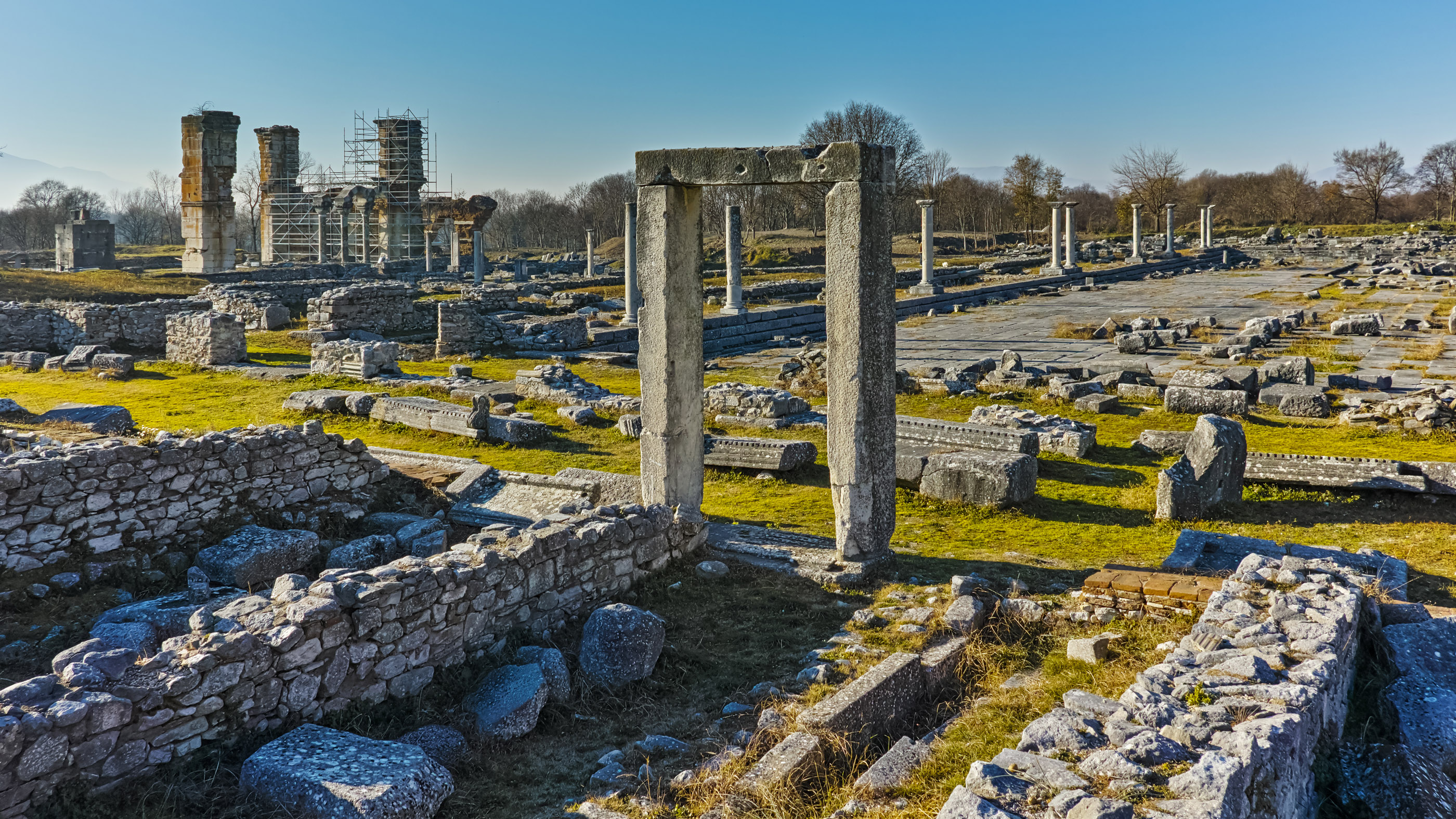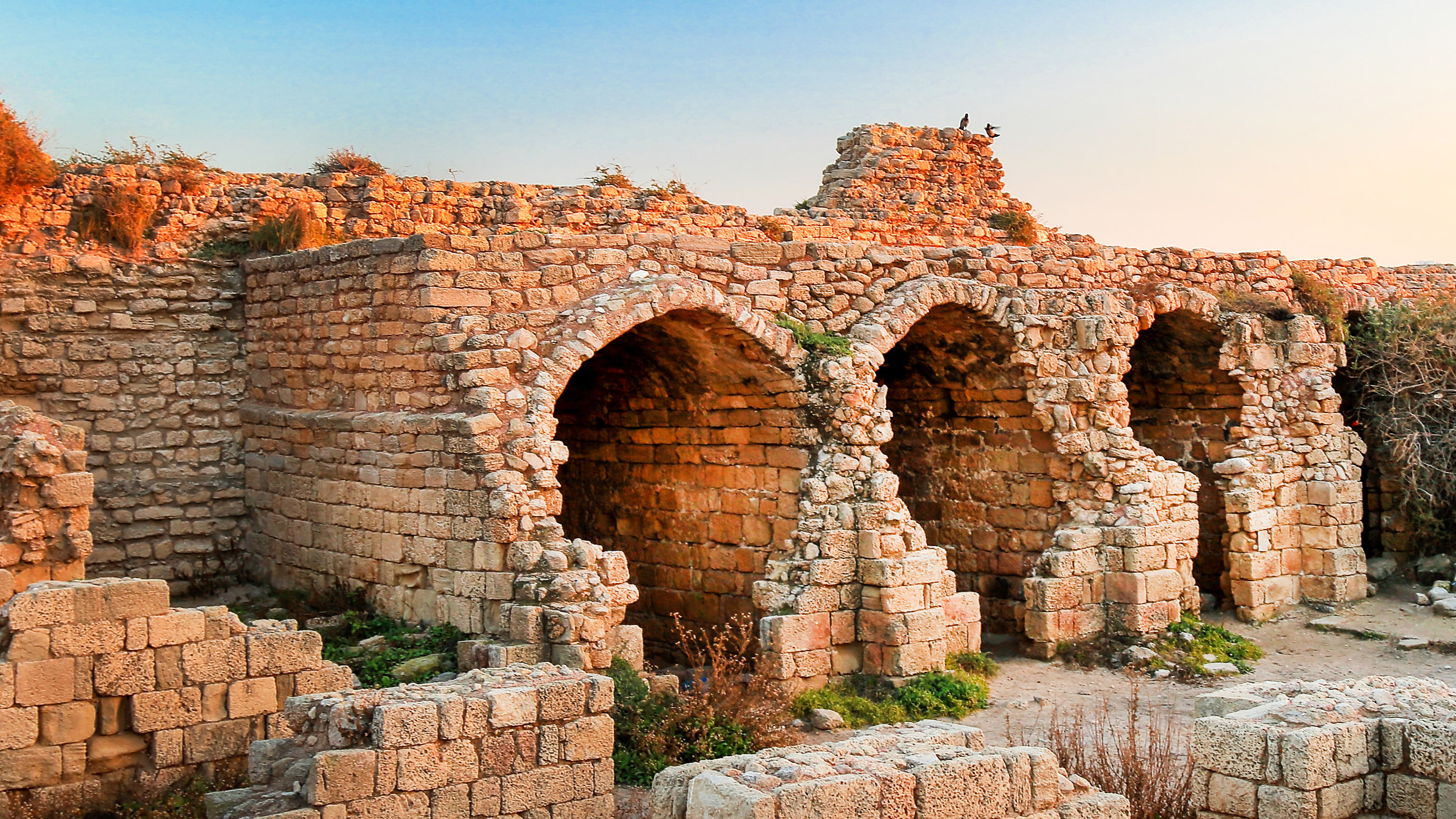Wizard battles and demon circles revealed in newly translated Christian texts

Have you ever heard the story of a wizard battle that supposedly took place when an early church was constructed? Or how about the story of a border guard who defied King Herod's orders and spared Jesus' life? Scholars have now translated these and other "apocryphal" Christian texts (stories not told in the canonical bible) into English for the first time.
More than 300 Christian apocryphal texts are known to exist, Tony Burke, a professor of early Christianity at York University in Toronto, Canada, wrote in the book he edited "New Testament Apocrypha More Noncanonical Scriptures (Volume 2)" (Eerdmans, 2020). "Apocryphal texts were integral to the spiritual lives of Christians long after the apparent closing of the canon and that the calls to avoid and even destroy such literature were not always effective" wrote Burke.
Ancient Christians often debated which texts told the truth about Jesus and which did not. By the end of the fourth century the church had 'canonized' the texts which they thought were accurate and included them in the bible.
Related: From Jesus' time: The 10 most interesting biblical discoveries
Wizard battle

One of the newly translated texts tells of a battle against 'diabolical' wizards who are trying to destroy an ancient church being built as a dedication to the Virgin Mary in the city of Philippi in Greece.
The text is written in Coptic, an Egyptian language that uses the Greek alphabet, and may have originally been written around 1,500 years ago, Paul Dilley, a professor of religious studies at the University of Iowa, who translated the text, wrote in the book. The story is told in two texts that were both from the Monastery of Saint Macarius the Great in Egypt. At that time, much of the population around the Mediterranean had converted to Christianity, although some still followed polytheistic faiths.
"There was a tendency to identify the remnants of polytheism with 'magoi' or 'wizards' who posed dangers to the Christian community, sometimes openly, sometimes clandestinely," Dilley told Live Science.
Get the world’s most fascinating discoveries delivered straight to your inbox.
In the text, the Virgin Mary comes to Bishop Basil (who lived from A.D. 329-379) in a dream and tells him where to find an image of her that is "not made by human hands," the translated text says. She also directs him to place the image in the sanctuary of her church on top of two columns, which he will find in a temple outside of Philippi.
"These two columns have been set up since the time of the giants. Demonic images cover them. It is not possible for anyone to take them down except through the order of my beloved son [Jesus]," the Virgin Mary says in the text.
Related: 6 Interesting facts about Jesus, the man
In this story, when Basil takes a group out to the temple he is confronted by a group of wizards who knew diabolical magic. "When they heard about these plans [to move the columns], they went with great disturbance and wretchedness and they made some great diabolic illusions."
Basil takes a staff that had been placed on a "sign of the saving cross" and puts the staff on the columns. "I placed it [the staff] upon the two columns, and immediately a great rumbling happened under the columns. Suddenly, they [the columns] leapt up at their bases and thus they rolled until they came to the place of the city's stadia," Basil says in the text.
The wizards stop them, and the magical tug of war between the wizards and Basil's group comes to a standstill; as night comes, Basil decides to dismiss his group and rest.
When Basil goes to sleep, the Virgin Mary comes to him in another dream and vows that the wizards will be defeated: "Those who did this evil deed of impertinent magic, behold, they are blind, grasping," she says.
Later on, after Basil wakes up, water bubbles up beside the columns creating a stream that miraculously heals people. The wizards were not so fortunate, as "immediately the earth opened its mouth and swallowed them," the text says. Basil also finds that the image has been placed on the columns by the Virgin Mary herself.
Today the two surviving copies of the text are in the Vatican Apostolic Library and the Leipzig University Library.
Border guard helps Jesus
Another newly translated text tells of a bandit named Dimas (also called Dymas/Dismas) who was crucified next to Jesus. The text claims that Dimas once worked as a border guard and was crucified after aiding Jesus and his family when they were fleeing to Egypt. The text says that Jesus was a baby at the time and his family was fleeing King Herod who wanted to kill Jesus.
Related: Proof of Jesus Christ? 6 pieces of evidence debated
This apocryphal text is written in Latin and dates back to the 12th or 13th century, said Mark Bilby, a senior assistant librarian of scholarly communication and lecturer of Religious Studies at California State University, Fullerton, who translated the text. Bilby notes that during the Middle Ages there were a number of stories that claim to tell the story of the criminals crucified beside Jesus. The text was likely written in a French monastery Bilby noted.
"I think the storyline is wholly fictitious, as a legend built on top of at least 10 discrete earlier legends" Bilby told Live Science. In the book, Bilby noted that this story and others like it may have been intended "to carry an implicit call for the young to leave family, join the Crusades, and become a friend of Jesus in and around the Holy Land."
The story takes place, according to the text, when Herod was trying to find and kill Jesus, and the guards had received orders to kill any infant boy they came across. To watch for Jesus, Dimas and his father guarded the border between Judea and Egypt, the story goes.
In the text Dimas' father goes off to do his rounds and tells Dimas to watch the border crossing carefully. Shortly afterward, Joseph and Mary arrive at the border carrying a poorly-clothed baby Jesus. Dimas approaches the family and asks about Jesus. Mary is afraid that Dimas is going to snatch Jesus away but Joseph talks to Dimas and convinces him to let them go.
Joseph convinces Dimas that a poor family posed no threat to Herod. "It is fitting that you all watch out for the sons of the rich men of this region who are capable of begrudging his superiority at a later time. Yet, when you see people squalid in misery, it is not appropriate to reproach them with these talks," Joseph says in the text.
Dimas lets them cross the border and even provides the family with some food. When Dimas' father finds out, he is furious. "What will I do now? Bound by oath, I will not be able to lie. If he [King Herod] convicts me of treason, he will kill me in place of the boys," Dimas' father says.
Herod later summons Dimas, who tells him of the family that was allowed to escape. Dimas is disowned by his father and turns to banditry.
Related: Cracking codices: 10 of the most mysterious ancient manuscripts
"Expelled from his father's house and neighborhood, he commenced engaging in banditry, and it became a tribulation, because he was hardened with weapons and perversity…" the text says. About 30 years later Dimas is captured during the time that Pontius Pilate was prefect (governor) of Judea and is crucified beside Jesus (who is now an adult) the text says. When they are about to be crucified, Dimas confesses the sins he made as a bandit and is forgiven by Jesus.
The only surviving copy of the text is in the library of the Grand Séminaire in Namur, Belgium.
Demon trapping
Another newly translated text, this one in Greek, tells how the Apostle Peter trapped seven demons who were masquerading as angels in the city of Azotus (also called Ashdod in what is now Israel).
Though it dates to the 11th or 12th century, the story was likely originally written centuries earlier, perhaps around 1,600 years ago. "The narrative resonates with the context of the fourth and fifth-century speculations about sin, but its loose form and lack of regimentation seem to represent an early phase in that development" wrote Cambry Pardee, a visiting professor of religion at Pepperdine University, London, in the book.
The author of the text "was writing a work of fiction, valorizing the adventures of the great Christian hero Peter," Pardee told Live Science. While the events are fictional, "it is very likely, though, that many common Christians who encountered this legend, either as a writing or in spoken form, would have believed it to be a true account, a lost story from Peter's life" Pardee said.
Related: The Holy Land: 7 amazing archaeological finds
In the text, Peter, who is suspicious of the "angels," marks a circle around them and states "my Lord Jesus Christ, let your glory be revealed through the Holy Spirit. Are these, as they say, angels of your divinity or spirits who hate what is good?'" (translation by Cambry Pardee)
Six of the demons admit to Peter that they are demons of deception, sexual immorality, falsehood, adultery, avarice and slander. The seventh demon challenges Peter and asks why demons are treated so badly compared to humans, saying that human sins are forgiven by Christ but demon sins are not. "You have the partiality of Christ; for which reason he chastises us, but he spares you when you repent. Therefore when he leads a prostitute and a tax collector and a denier and a blasphemer and a slanderer into his kingdom, then he ought to gather all of us with you!"
The demon also notes that humans should stop blaming demons for their mistakes. "I, the devil, am not their troubler, but they themselves fall down. For I have become weak and am without vigor. Therefore, I no longer have a place nor an arrow, for everywhere people have become Christians. Therefore let them guard themselves and not cast blame" the demon says. Peter then lets the demons go.
The only surviving copy of this text is in the Biblioteca Angelica library in Rome.
Originally published on Live Science.

Owen Jarus is a regular contributor to Live Science who writes about archaeology and humans' past. He has also written for The Independent (UK), The Canadian Press (CP) and The Associated Press (AP), among others. Owen has a bachelor of arts degree from the University of Toronto and a journalism degree from Ryerson University.



